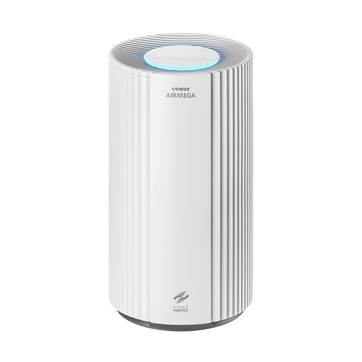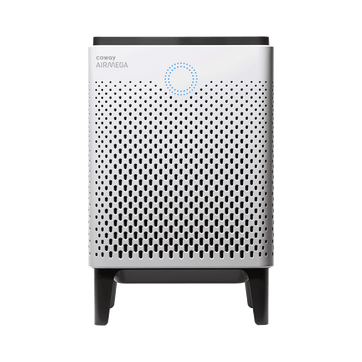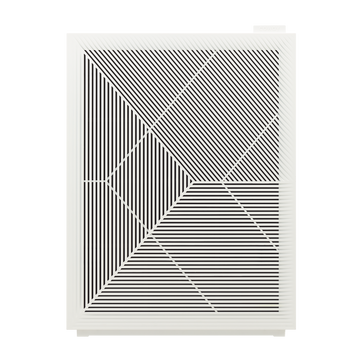
What is off-gassing?
We’ve all experienced that “new” scent. It smells artificial, yet slightly intoxicating, and comes from sources beyond a new car. Sometimes, for instance, it wafts from a new carpet, or emanates from a fresh coat of paint.
What exactly is it? That characteristic “new smell” called off-gassing, and it isn’t so innocuous. Here is all you need to know about what off-gassing is, how it occurs in our homes, and what we can do to keep our air cleaner.
Off-gassing doesn’t sound very healthy. What is it exactly?
Off-gassing occurs when new, manufactured items in our homes release volatile organic compounds (VOCs) and other chemicals. Consider the last few furniture items you purchased — maybe the leather couch had “new car smell” for a few weeks. That odour is a result of finishes, paint, glue, and other substances emitting chemical particles as they settle.
What other household products off-gas?
A lot. In terms of furnishings, common culprits include cabinets, tables, couches, and even mattresses, which often contain several synthetic materials. There’s also a lot of off-gassing going on behind our walls and under our floorboards: Carpeting, vinyl flooring, wall paint, particleboard, plywood, and insulation all emit myriad VOCs. Even the items we use to clean our homes, such as air fresheners and cleaning sprays, contain toxic substances that stick around in the air long after use.

What chemicals are ‘off-gassed’?
Thousands. Since World War Two, 80,000 new chemicals have been invented and placed in household items, though we have only studied the impact of a few. Formaldehyde, for instance, is a known carcinogen, but is still found in wood finishes, glues, insulation, and even hand soap. Polyurethane foam, a petroleum-based chemical found in mattresses, can cause respiratory difficulties and skin irritation.
For a more complete list of chemicals and the household products they’re in, check the Department of Health and Human Services database.
Is my furniture going to make me sick?
It isn’t that cut and dry. The health effects of VOC exposure varies depending on the person, the chemical, and its concentration. Sometimes, off-gassing manifests as temporary dizziness after the use of cleaning products, but other times, you might feel nothing. In the long-term, however, doctors are concerned about continued exposure to off-gassing. So far, chemical contaminants have been linked to 180 diseases.
Does this last forever? What if I can’t smell it?
Chemical off-gas at different rates, but manufactured goods usually undergo their most noxious (and smelly) off-gassing for about a month after they’re produced. Still, some chemicals can emit VOCs for years. Carpeting, in particular, can off-gas for up to five years. And certain VOCs, like Phthalates, are odourless, and so may go undetected.
What can I do to make sure I don’t buy products that emit VOCs?
Thanks to increased consumer safety advocacy over the past two decades, there are now numerous third-party certifications for household goods. For furniture, the GREENGUARD, Scientific Certification Systems (SCS) and SGS Group certifications denote goods that are low to no-emission. Solid wood generally contains fewer VOCs than particleboard or plywood. If you want to purchase a mattress, look for one that is made of organic cotton, chemical-free wool, or natural latex.
Alternatively, buying used furniture is also a strong vanguard against harmful VOCs, as most second-hand goods have already undergone their worst off-gassing.
What can I do to decrease off-gassing on the items I’ve already purchased?
No need to throw it out, but you probably shouldn’t let items sit in your house as they off-gas. Instead, leave them in a garage to air out for a few weeks. If that isn’t a possibility, many furniture stores will allow you to ventilate your purchases on-site before taking them home. If you’re painting, do it in the spring when you can open the windows.
Because there can be dozens of items in your home at various stages of off-gassing, it’s also a good idea to use an air purifier to filter the VOCs out of the air.
Disclaimers
1Coway air purifiers has been proven to trap dust, pollen, dander, viruses and bacteria in the air based on KCL (Korea Conformity Laboratories) testing.They have been tested in a 30㎥ size chamber according to the Korea Air Cleaning Association standard (SPS-KACA 002-132:2022 Modified) to measure the 0.01㎛ size of particle removal rate. It was tested on maximum airflow speed in normal room temperature and humidity conditions. The performance may vary in the actual living environment of customers.
→ Tested with Airmega Aim, 150, 160, AP-1216L, AP-1512HH, AP-1512HHS, 200M, Icon, IconS, 230, 240, 250, 250 Art, 250S, 300, 300S, 400, 400S, ProX
299.97% of viruses, bacteria, fungi and pollen were verified to be removed from the air for Coway air purifiers which have Green True HEPA™ filter applied based on the Japan Food Research Laboratories(JFRL) testing according to JEM 1467 standard.
→ Tested with Coway Airmega AP-1512HH, AP-1512HHS, 250, 250 Art, 250S, 300, 300S, 400, 400S
→ All tested by JFRL and received above result within below time.
All tested by JFRL and received above result within below time.
- Virus: Tested with Escherichia coli phage ΦX174 NBRC 103405, 60 minutes
- Bacteria: Tested with Staphylococcus epidermidis NBRC 12993, 60 minutes
- Fungi/Mold: Tested with Penicillium citrinum NBRC 6352, 60 minutes
- Pollen: Tested with Cedar Pollen extract, 60 minutes
3Aerosol test conducted in a Biosafety level 3 laboratory with two Coway air purifier models, Coway Airmega 250 and 400 for removal of SARS-CoV-2 Aerosol by US based MRI Global, a not-for-profit laboratory and partner of US Department of Defense. The test was conducted in a 13.1ft3 chamber. Virus was aerosolized for 15 minutes and the product was turned on high for 2 minutes. Result showed each product effectively removed over 99.98% of the SARS-CoV-2 in 2 minutes. This is a result from a laboratory experiment condition and result may vary in different conditions. This result does not imply it kills SARS-CoV-2 or prevents the transmission of Covid-19. Coway Airmega 250S and 400S are identical to the tested models and has equal performance with an additional mobile connectivity function.
4The concentration of ammonia, acetaldehyde and acetic acid were proven to be removed within 30 minutes by FCG Research Institute, Inc. Human Life Science Lab. It is not a demonstration result in the actual use space. Not all odors and gases may be supported. → Tested with Coway Airmega 150, 160, AP-1512HH, AP-1512HHS, 400, 400S
5The coverage area of the air purifier is based on an area where the air cleaner can make two air changes per hour (ACPH). An air change per hour translates to how many times an air purifier can clean an area, assuming the height of a ceiling to be 8 ft, in one hour. Therefore ** means two air changes per hour means that the cleaner can clean the area once every 30 minutes and * means air changes per hour means that the air purifier can clean the area once every 60 minutes.
10Terms and conditions apply. Discounts, including promotions, coupons, bundle discount and subscription discount, cannot be stacked on top of other coupons. During promotional periods, discount codes will not be able to be applied to orders. Promo codes may apply to products only—filters, accessories, and new products within 3 months of the release date are not included.




















